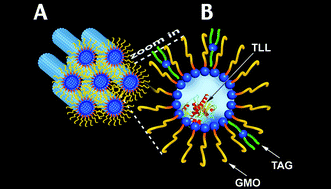Lipid polymorphism in lyotropic liquid crystals for triggered release of bioactives†
Abstract
In this review we present recent progress on lyotropic liquid crystals (

* Corresponding authors
a
The Ratner Chair in Chemistry, Casali Institute of Applied Chemistry, The Institute of Chemistry, The Hebrew University of Jerusalem, Edmond J. Safra Campus, Jerusalem 91904, Israel
E-mail:
garti@vms.huji.ac.il
Fax: (+972)-2-652-0262
Tel: (+972)-2-658-6574/5
In this review we present recent progress on lyotropic liquid crystals (

 Please wait while we load your content...
Something went wrong. Try again?
Please wait while we load your content...
Something went wrong. Try again?
N. Garti, D. Libster and A. Aserin, Food Funct., 2012, 3, 700 DOI: 10.1039/C2FO00005A
To request permission to reproduce material from this article, please go to the Copyright Clearance Center request page.
If you are an author contributing to an RSC publication, you do not need to request permission provided correct acknowledgement is given.
If you are the author of this article, you do not need to request permission to reproduce figures and diagrams provided correct acknowledgement is given. If you want to reproduce the whole article in a third-party publication (excluding your thesis/dissertation for which permission is not required) please go to the Copyright Clearance Center request page.
Read more about how to correctly acknowledge RSC content.
 Fetching data from CrossRef.
Fetching data from CrossRef.
This may take some time to load.
Loading related content
